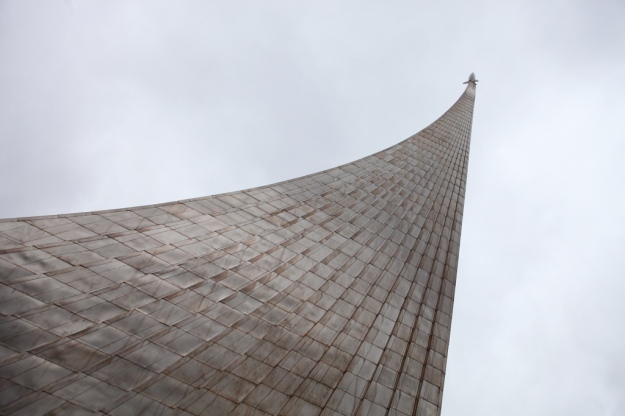There’s a moment in modern travel where you descend from the sky, after temporarily piercing through the cloud deck, that you suddenly see a new foreign country appear in front of you. Almost immediately I try to discern some sort of trait or character from the land floating by below–is it sandy or green, populated or barren, a patchwork or solid? On approach into Moscow, Russia, I again tried to answer this question, is is the Russia of Western lore, grey and nondescript? In fact, no, it is a country of lush greens, punctuated by small groups of houses, at least on the way into this airport. It’s perhaps a silly question, since the world’s largest country is more than just the few miles before the runway at Sheremetyevo.
Our trip to China last year brought a view of a similarly huge country, in the midst of change to sophisticated nation replete with maglev trains and an Apple Store. After years of reading about the former Soviet Union, portrayed from our media and perspective as a foreign and obtuse land, I wanted to see Russia, what kind of place indeed it is today, even through the filter of a guided tour.
Today we started late into the city, visiting the Memorial Museum of Astronautics on our own. Situated under the base of the Monument to the Conquerors of Space, a giant skyward reaching arc, the museum containts hundreds of exhibits about the Russian space program. The monument looks a bit like half of the St. Louis Arch but with a model of a rocket at the top. At the base are reliefs of the men and women of the space program: Scientists and engineers, including what appears to be a programmer, led by Lenin in a charge to the skies. A monument that celebrates science and engineering made me smile.
Inside, after buying both a ticket and an armband allowing me to take photos, we ventured into a hall filled with mockups and models of various Soviet space missions, including one of the original Sputnik and two stuffed dogs which were part of an early manned program. It is surprising to see the brusque nature of Soviet era engineering–rivets and bolts lining metal instrumentation cans– which are so utilitarian yet effective. Amongst the hundreds of artfacts, there are gyroscopes and turbopumps, pocket watches and mission logs. The only unfortunate thing is that the descriptions are mostly in Russian. As with all things space, the Museum attracted kids of all ages, including several birthday parties today. Their disinterested parents filled with cafe, which catered a huge brunch spread of salads, prawns, and pastries, as their children ran around learning about cosmonauts and satellites.
Although many items are mockups, designed for training or analysis, there are quite a few space flown objects, including capsules which reentered through the atmosphere. Siobhan and I found the heatshields covered with instructions on how to help the cosmonauts inside quite amusing, but it’s perfectly possible their capsule may have landed into a foreign country.
Tom Wolfe wrote about the Mighty Integral, the perceived singular Soviet space program which confounded the Americans with stunning successes. But in fact, this museum demonstrates the work of thousands of men and women behind the effort, which I think is quite commendable.
The rest of the day unfortunately became darker and the rain grew stronger. We walked down the street to the All Russia Exhibition Center, but didn’t get much of a chance past the soggy bumper cars and street performers readying themselves under cover from the elements. Inside one pavilion was a strange flea market of digital cameras, matroshka dolls and tasers.
This evening, we walked through the damp Red Square and saw St. Basil’s Cathederal, unfortunately obscured by scaffolds and seating from a military band exhibition earlier this week. My intent is to go back later tonight and take some better photos.
We also visited the GUM Department Store, which is now filled with high end luxury boutiques. The beautiful building, started in the 1800s, features a glass roof cast over rows of storefronts with medieval and neoclassical elements. Our guide described one shop as a Soviet style supermarket, but given the 5600 ruble price of a bottle of Veuve Cliquot on sale, I kind of doubted the veracity of the goods.
On the way to dinner, we walked past the former KGB headquarters, the Lubyanka building, onwards to a meal at a delightful restaurant which served items such as Olivier Salad and borscht. Despite warnings Russian food would be terrible, in fact, our dinner was incredibly good. I’m glad we were encouraged to go there.







